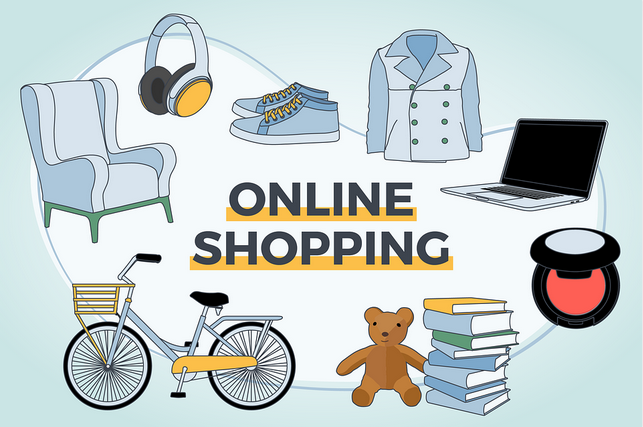These are the Gen Z statistics (2022 edition) you need to make smart marketing decisions.

How important is Gen Z for your business?
(The answer lies in Gen Z’s size.)
In a word, very.
After all, it would be foolish to ignore a generational cohort that, as of 2019, made up 32% of the world’s 7.7 billion population and that would eventually comprise a whopping 40% of all customers (that’s 2.5 billion people) by 2020. In short, they’re the largest generation of consumers ever!
Let’s put those numbers into perspective.
Even though Gen Z’ers are quite young, they already have an annual estimated purchasing power of $44 billion. But that’s not all because over 70% of Generation Z state that they influence their family’s purchasing decisions. And if you are to ask the parents, that number is even higher: 93% of parents say their teenage children influence their buying decisions.
No wonder 65% of marketers plan to increase their marketing spend on Gen Z—and why it’s necessary to get to know the crucial facts, figures, and characteristics that define Gen Z.
Gen Z facts to level-up your Gen Z marketing
The Gen Z age range
Before we delve into Generation Z statistics, we should probably tackle an important question: When exactly does Gen Z start and end?
Here’s what you need to remember.
- Gen Z were born between 1997 and 2012.
- They are the generation that comes after millennials.
- While millennials were digital pioneers, Gen Z are true digital natives having grown up with the mobile phones, the internet, and social networks.
- Most still live off allowances but many have already graduated and entered the workforce. That means these young consumers have their own disposable income to spend as they see fit.
How and where do they spend their money?
This study has some interesting findings on UK Gen Z consumption.
Here are the key takeaways:
- 25% of total retail spend in the UK comes from Gen Z and millennials. As more start working, this number is expected to increase to 39% by 2030.
- Gen Z spending is now 7% above pre-COVID levels. By comparison, millennial spending remains the same whereas older generations are spending conservatively, at 5% below pre-COVID times.
- Buy Now Pay Later (BNPL) schemes are highly popular, growing by 315% compared to 4% growth for credit and debit card purchases.
- Gen Z and millennials spend most on fashion: 75% of Gen Z spending is on fashion compared to millennials’ 65%.
- Home and recreation are the next fastest growing categories for these young consumers with 5% of Gen Z spend and 9% of millennial spend. Wellness and beauty are also categories seeing growth.
- Younger UK Gen Z consumers are supporting small businesses through BNPL – Gen Z and millennials account for almost 2/3 of all spend on small businesses.

As for US Gen Z consumers, this Morgan Stanley research found the following:
- Together with millennials, Gen Z spend a large portion of their income on eating out, mobile devices, transportation and housing.
- Regarding value, the same study found that, compared to older generations, American Gen Z shoppers are more likely to buy lower-priced, lower-quality items in less critical categories so that they can spend more on something else.
- Per this McKinsey study, they’re also more likely to spend more on items that are unique and “tailored to their interests”.
Do these young consumers favor online shopping?
Surprisingly, no. In fact, for clothing in particular, Gen Z are shifting towards brick-and-mortar stores for their needs.
So while they’re certified digital natives (and have come to expect omnichannel shopping experiences), they’re also incredibly flexible as to where they shop. They shop everywhere from Instagram to department stores; pop-up shops to specialty stores; and even at convenience store chains.
Furthermore, like the millennials before them, this generational cohort is willing to try new things like livestream shopping and using augmented reality throughout the purchase process.
How does Generation Z feel about in-store shopping?
A Kearney study found they feel good about it!
To be more precise, a substantial 81% say they like shopping in brick-and-mortar stores. They go to physical stores to discover new products, try out their purchases, or to avail of special promotions like free samples or and giveaways.
What are Gen Z’s shopping preferences?
Whether it’s shopping in-store (at brick-and-mortars) or shopping online, Gen Z consumers are value-oriented. Here are their preferences.
- Gen Z would rather not pay full price for anything.
- To that point, approximately 65% appreciate coupons, discounts, and rewards programs as a way to get “real value for their money”.
- It’s not just about prices for Gen Z because 66% say that high-quality products matter to them when making a purchase.
- 66% also say that they want as few products to be out of stock as possible.
Generation Z characteristics
Are there any notable differences between Gen Y and Gen Z? Or rather, what makes Gen Z, well, Gen Z?
Here’s what you need to know to begin understanding Gen Z.
- For Gen Z, diversity is the norm. They aren’t bothered by sexual orientation, race, or religion.
- They’re a pragmatic bunch who are financially minded and driven by security, the result of witnessing their parents affected by various crises from the Great Recession to the impacts of the COVID pandemic.
- Gen Z are politically progressive but compared to their US counterparts, European Gen Zers are supposedly less woke.
- Aside from being tech-savvy, this generation values social proof; they turn to various sources including social media to make informed decisions. Note that 82% say reviews are extremely important when shopping online!
- Unfortunately, Gen Z tend to be afflicted with mental health challenges. They’re spending more time on their phones and hanging out online on streaming platforms and social media, where they end up comparing their lives to others’ and eventually feeling depressed.
What are Gen Z’s top concerns?
According to this Deloitte study, Gen Z’s greatest concerns are the following:
- Climate change: 26%
- Unemployment: 25%
- Health care/ disease prevention: 21%
- Education, skills, training: 18%
- Sexual harassment: 17%

How does Gen Z spend their time online?
Having grown up in an environment of rapid technological innovation, our digital natives don’t just spend a lot of time online, they also have very firm convictions about what they expect from business’ online.
Here are the facts:
- Over 74% of Gen Z say they spend their free time online.
- According to Campaign Monitor, 45% of teens say they’re online “almost constantly” while 44% say they’re online multiple times per day.
- UK Gen Zers spend an average of 10.6 hours online each day.
- 75% chose mobile phones or smartphones as the devices they use the most, spending an average of 11 hours on their mobile devices per week.
- Approximately 23 hours each week is spent streaming video content.
- On average, this generation has an attention span of just 8 seconds – that’s 4 seconds less than Millennials!
- 60% of Gen Z won’t use an app or website that is slow to load.
- When it comes to online shopping, 28% say that a simple checkout process is a purchase driver.
- Compared to 67% of older generations, only 37% of Gen Z rely on large e-commerce platforms like Amazon.
What kind of social media do they use?
To strengthen your Gen Z social media marketing efforts, make sure you take note of the following:
- Gen Zers spend approximately 2 hours and 55 minutes logged into social media per day – that’s roughly 60 minutes longer than Millennials!
- 26% use social media to make a purchase.
- Here’s where Gen Z hang out online every day:
- 65% – Instagram
- 62% – YouTube
- 51% – Snapchat
- 34% – Facebook
- 23% – Twitter
- 22% – Facebook Messenger
- 14% – Pinterest
- 11% – TikTok
- 10% – Discord
- 8% – Tumblr
- According to Response Media, this is how Gen Z uses social media:
- Instagram – to showcase their aspirational selves
- Snapchat – to share real-life moments
- Twitter – to get the news
- Facebook – to get information
- Meanwhile, Gen Z’s favorite social media platforms are as follows:
- YouTube: 85%
- Instagram: 72%
- Snapchat: 69%
- Facebook: 51%
- Twitter: 32%
- Tumblr: 9%
- Reddit: 7%
How does Gen Z feel about online privacy?
Privacy on the internet will continue to be an important topic in marketing—not just in terms of this generation but for all generational cohorts.
Take a look at these findings:
- Per NGen, 88% of Gen Z agree with the statement that “protecting my privacy is very important to me”.
- Less than 30% of Gen Z would be willing to share their online history, photos & videos, location, health and wellness information, personal life information, or payment information with a brand.
- In 2020, 60% said they would prefer to keep their data rather than exchange it for free services.
- Gen Z have a preference for brands that keep their personal data secure and would feel better about sharing personal information if the brand:
- offers secure storage and protection of personal data → 61%
- is transparent with the terms and conditions related to the use of personal data → 43%
- clearly explained what kind of data is collected and how it’s used → 39%
- offers incentives in exchange for access to personal data → 31%
- would allow them to change their minds about sharing personal information – i.e. choosing to stop sharing personal information → 30%
- are honest about recovery solutions in the event of data security breaches → 26%
- will not use the personal data to spy on them → 21%
- would allow them to check the information brands have on them at any time, on any device → 14%
How can we segment Gen Z?
Ernst and Young’s Gen Z Segmentation Study found that Gen Z can be broken down into five core segments.
1. Stressed Strivers
- 35% of Gen Zers are ‘stressed strivers’.
- They are high achievers, entrepreneurial, independent, and future-oriented individuals.
- They are motivated by a fear of not being ‘good enough’.
- Rather than wanting to enjoy their work, they are more concerned about ‘achieving success and feeling respected’.
- Their parents tend to fall into higher-income brackets.
2. Big Plans, Low Energy
- 18% of Gen Zers fall into this segment.
- They’re the category of Gen Zers that most resemble stereotypical Millennials.
- This group of individuals expect to do well (and make money) but lack willingness to put in the effort.
- They are dreamers, have many desires, and live in the moment.
- These youngsters spend more time on things they enjoy than on those that will help them in the future.
3. Carefree Constituents
- 16% of Gen Zers are categorized as carefree constituents.
- As the name of this segment suggests, these individuals tend to “go with the flow”.
- They aren’t trendsetters, influencers, or drivers of change – but they are the ones who make things mainstream
- Carefree constituents are easygoing, open-minded, and live in the moment.
4. Authentic Activists
- Like carefree constituents, 16% of Gen Z make up this segment.
- Authentic activists are driven by a sense of responsibility to ‘save the world’ – and consequently fear what will happen if they don’t.
- These youths are determined, passionate, and open-minded.
- They want to make a difference.
- Greta Thunberg would fall into this segment of Gen Z.
5. Secluded Perfectionists
- 15% of Gen Zers are ‘secluded perfectionists’.
- These individuals are ambitious, driven, and intrinsically motivated.
- Rather than being rich and / or famous, they care more about how they feel.
- Their focus is on being the best – not because of money or to receive praises, but because they love what they do.